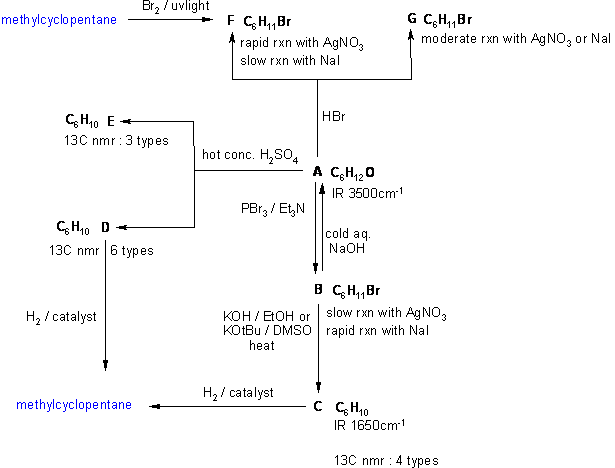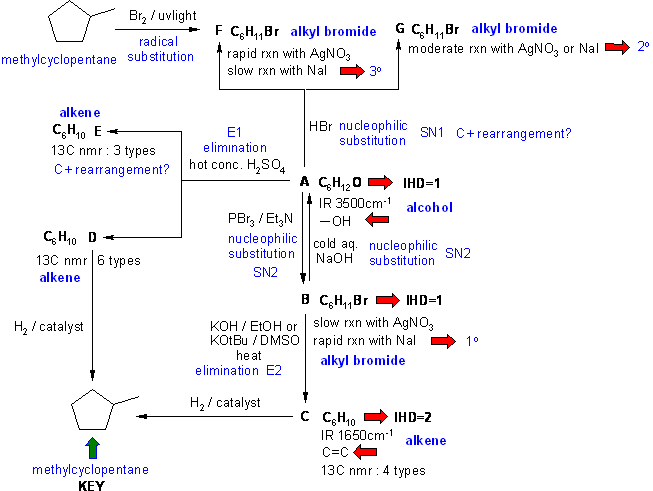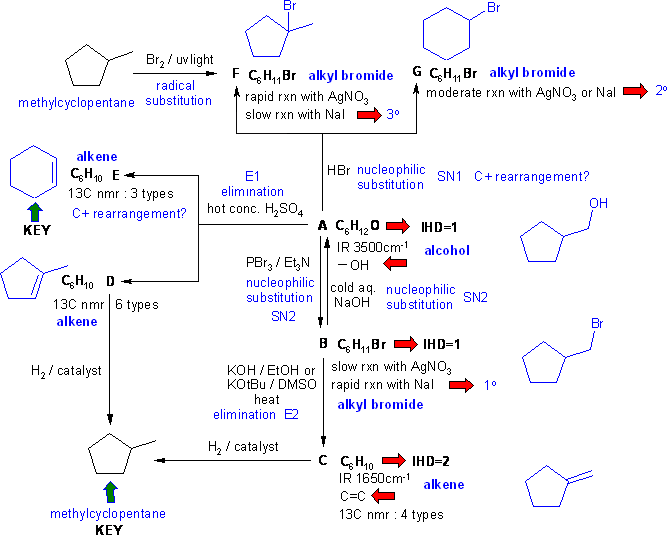
Part 9 : STRUCTURE DETERMINATION
Note that these types of questions are often the most difficult on the examination.
This is because they are holistic in that they require a good understanding
of the reactions and the concepts and the ability to apply those concepts. They
can't be memorised, they require understanding and ability to apply. Hence they
help discriminate those who truly understand from those who have memorised and
will soon forget.
A full schematic of the full solution is presented below. This is also presented
in several parts, where each diagram has more information added to it.
The idea behind this is to encourage students to see how to work towards the
answer by building up the answer from the information in the question gradually.

Diagram 2
gives the basic information from the question in black and deductions directly
from this information are indicated by red arrows and with blue text plus it identifies the functional groups
and points that provide potential key information by green arrows and key initial
structures.

Diagram 3
gives the completed solution with the structures in blue. In this problem
the are several routes to connect the structures.
Key steps are recognising the
methylcyclopentane framework (based on the name) and the carbocation rearrangements
to the cyclohexane systems.
